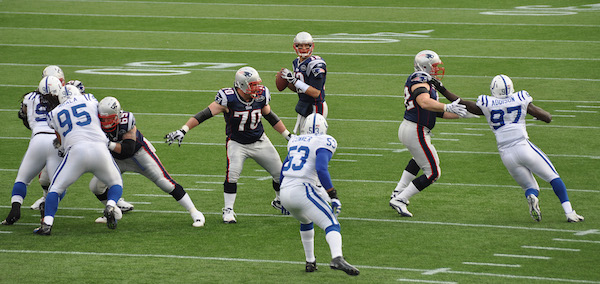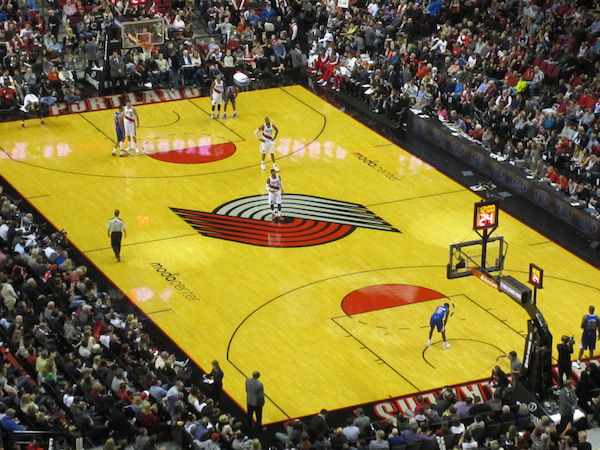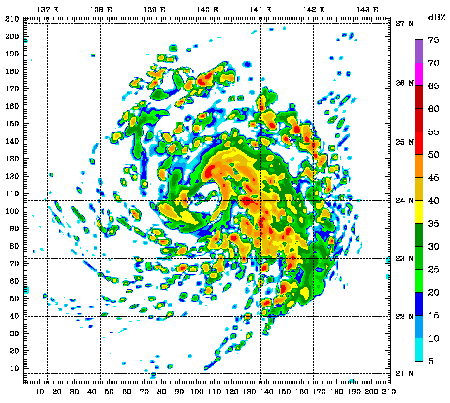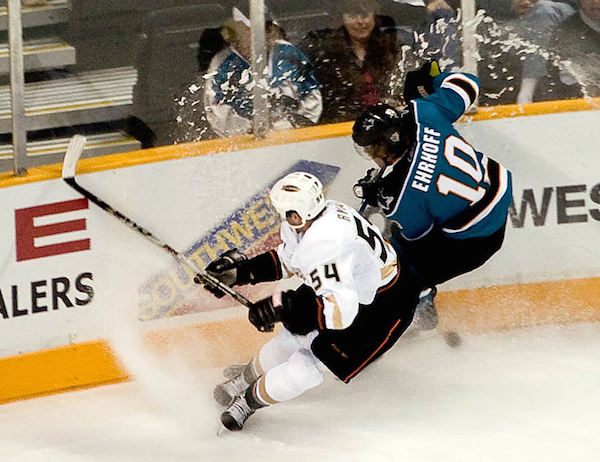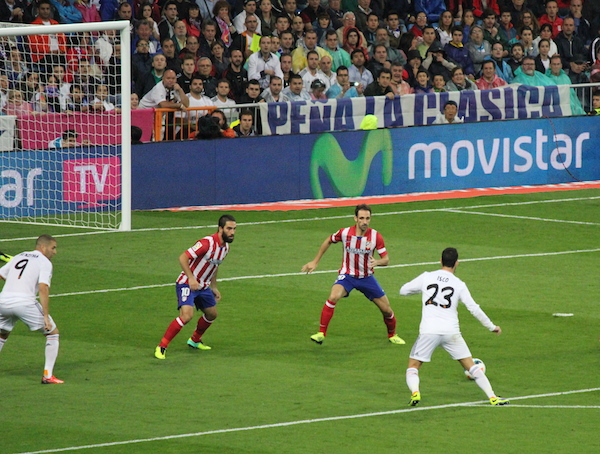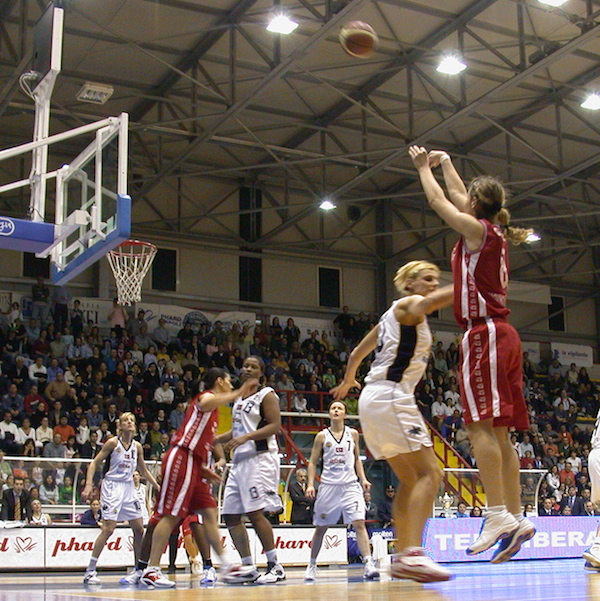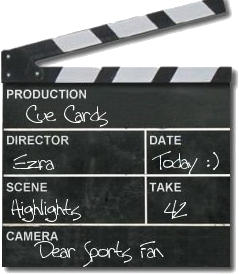Dear Sports Fan,
What is a corner three in basketball? I hear announcers talking about it and I get that it’s some special kind of three point shot but I don’t know what makes it so special.
Thanks,
Lora
Dear Lora,
This is going to sound a little like a definition by repetition but a corner three is a three point shot in basketball taken from the corner of a basketball court. If you picture a basketball court, the three point line is the largest curve that arcs from the baseline on one side of the basket up towards the center of the court before curving back to the baseline on the other side of the basket. It is not one half of a circle, it’s a part of an ellipse. What this means is that the distance from any point on the three point line to the basket varies depending on its position. If you draw a line from the basket straight up the court, (perpendicular to the baseline), it will hit the three point line at its farthest from the basket. In the National Basketball Association (NBA), that distance is 23.75 feet. If you follow the baseline towards the corner of the court, you will hit the three point line at its closest to the basket. In the NBA, that distance is 22 feet. The corner three is the shortest shot a basketball player can take to earn their team three points if it goes in. Based just on this mundane 1.75 foot distinction, the corner three has become a cultural and tactical lodestone in the NBA.
The three point line was introduced to the NBA in 1979 and it had an instant impact on the game. Before the three point shot, basketball was dominated by big men like Bill Russell, Wilt Chamberlain, and Kareem Abdul-Jabbar. If all shots were worth the same amount, why wouldn’t the game be dominated by the players who could make the closest shots most easily? For the first twenty five years of its existence the three point line gave a measure of equality to smaller players who could shoot three-point shots with some consistency but it didn’t materially change the nature of the game. The most dominant players in basketball were still giants like Hakeem Olajuwon and Shaquille O’Neill or guys half a foot shorter like Michael Jordan and Kobe Bryant who used their ferocious athleticism to drive to the hoop and convert lay-ups, dunks, or get fouled. Sure, championship teams often had a player or two who specialized in lurking at the three point line, ready to catch a pass and shoot a quick three pointer, and yes, these guys frequently preferred the shorter corner three to the longer threes on the court (and yes, they were stereotypically less athletic and white) but this was a side-show to the main attraction.
In the past five years, this has started to change, and all signs point to us being at the front edge of a basketball revolution sparked by the corner three. When Michael Lewis published his book, Moneyball, in 2003, he didn’t just popularize the statistical revolution in baseball, he also helped legitimize the use of statistics in other sports as well. Basketball has found more success in using statistics than football or hockey, perhaps because its relatively small number of players and high number of scores and scoring attempts create simpler and better data sets than other sports. The relatively clear conclusion of a statistical analysis of basketball shots tells teams that shots from very close to the basket and three point shots from the corner are by far the most effective and efficient tactics in the game. Teams and players have acted on this knowledge and by 2015 probably 26 or 27 of the 30 NBA teams use offenses designed to maximize the team’s chances of ending possessions with either a lay-up, dunk, or corner three. Today, it’s not just the stereotypical unathletic white guy who lurks in the corner and jacks three pointers, now it’s the best players in the league who do that.
in 2003, he didn’t just popularize the statistical revolution in baseball, he also helped legitimize the use of statistics in other sports as well. Basketball has found more success in using statistics than football or hockey, perhaps because its relatively small number of players and high number of scores and scoring attempts create simpler and better data sets than other sports. The relatively clear conclusion of a statistical analysis of basketball shots tells teams that shots from very close to the basket and three point shots from the corner are by far the most effective and efficient tactics in the game. Teams and players have acted on this knowledge and by 2015 probably 26 or 27 of the 30 NBA teams use offenses designed to maximize the team’s chances of ending possessions with either a lay-up, dunk, or corner three. Today, it’s not just the stereotypical unathletic white guy who lurks in the corner and jacks three pointers, now it’s the best players in the league who do that.
No combination of team and player represent this new way of playing better than the Houston Rockets and James Harden. Kirk Goldsberry wrote a wonderful article about this for Grantland. If you want to learn more about how the corner three is changing basketball, I suggest you go read his article! Here’s a short excerpt that summarizes the emotional and perceptual issue that basketball fans over the age of 30 are having with watching this new style.
For those of us who grew up watching Bird, Magic, and Jordan, there’s an increasing dissonance between what we perceive to be dominant basketball and what actually is dominant basketball. Sometimes the two are aligned, but they seem to be increasingly divergent — and perhaps the most tragic analytical realization is that the league’s rapidly growing 3-point economy has inherently downgraded some of the sport’s most aesthetically beautiful skill sets.
Like everything in sports, the corner three is subject to change. Whether it’s a rule change or simply a strategic adjustment, something will come along that threatens the dominance of today’s ascendant basketball shot. Until that time though, watch out for the open player in the corner!
Thanks for the question,
Ezra Fischer

